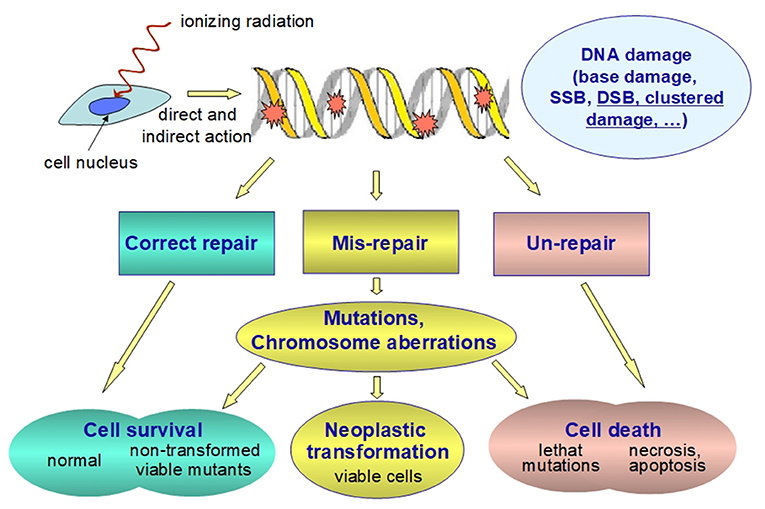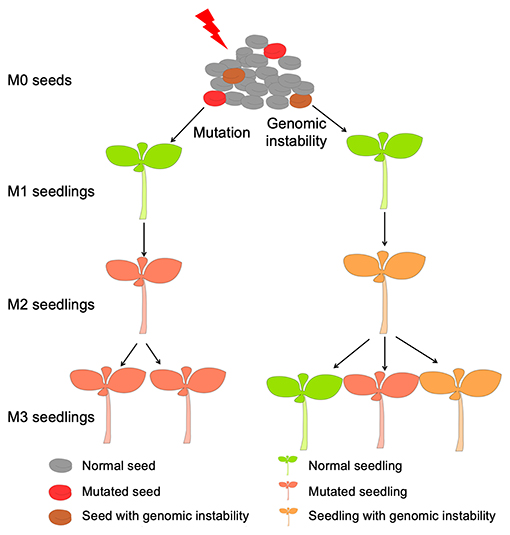Nuclear radiation mutations have been a topic of concern and fascination for decades. The effects of radiation exposure on living organisms can lead to significant genetic changes, some of which may have long-lasting consequences. Understanding these mutations is crucial, especially in the context of nuclear accidents, medical treatments, and environmental contamination.
From the Chernobyl disaster to the Fukushima incident, the world has witnessed the devastating effects of nuclear radiation on ecosystems and human health. These events have highlighted the importance of studying nuclear radiation mutations to better prepare for potential future occurrences.
This article aims to provide a comprehensive overview of nuclear radiation mutations, their causes, effects, and the measures that can be taken to mitigate their impact. By exploring scientific research, case studies, and expert opinions, we aim to equip readers with valuable insights into this critical subject.
Read also:Cristiano Ronaldos Wife The Ultimate Guide To Her Life Career And Family
Table of Contents
- What Are Nuclear Radiation Mutations?
- Causes of Nuclear Radiation Mutations
- Biological Effects of Radiation
- Types of Mutations
- Case Studies of Radiation Exposure
- Long-Term Effects on Ecosystems
- Human Health Consequences
- Mitigation Strategies
- Scientific Research and Studies
- Conclusion and Call to Action
What Are Nuclear Radiation Mutations?
Nuclear radiation mutations refer to changes in the genetic material of living organisms caused by exposure to ionizing radiation. This type of radiation has sufficient energy to remove tightly bound electrons from atoms, leading to the formation of free radicals and DNA damage. Over time, these changes can result in mutations that affect cellular function and reproduction.
The severity of nuclear radiation mutations depends on several factors, including the dose of radiation, duration of exposure, and the sensitivity of the organism's cells. These mutations can occur in somatic cells, affecting only the individual exposed, or in germ cells, potentially passing genetic alterations to future generations.
Understanding the mechanisms behind nuclear radiation mutations is essential for developing strategies to protect both humans and the environment from the adverse effects of radiation exposure.
Causes of Nuclear Radiation Mutations
Nuclear Accidents
One of the primary causes of nuclear radiation mutations is nuclear accidents. Events such as the Chernobyl disaster in 1986 and the Fukushima Daiichi accident in 2011 released significant amounts of radiation into the environment, leading to widespread contamination.
Medical Radiation
Medical procedures involving radiation, such as X-rays and cancer treatments, can also cause mutations. While these procedures are designed to be safe and effective, there is always a risk of unintended genetic changes, especially with prolonged or repeated exposure.
Environmental Contamination
Radioactive materials released into the environment through improper disposal or industrial accidents can lead to long-term exposure for wildlife and humans. This contamination can result in chronic radiation exposure, increasing the likelihood of mutations over time.
Read also:The Tallest Women Basketball Players Celebrating Height And Skill
Biological Effects of Radiation
Ionizing radiation affects living organisms at the cellular level, causing damage to DNA, proteins, and other vital molecules. The biological effects of radiation can be categorized into acute and chronic effects.
- Acute Effects: These occur shortly after exposure to high doses of radiation and include symptoms such as nausea, vomiting, and skin burns.
- Chronic Effects: Long-term exposure to lower doses of radiation can lead to more severe consequences, including cancer, genetic mutations, and reproductive issues.
Research conducted by organizations such as the World Health Organization (WHO) and the International Atomic Energy Agency (IAEA) has provided valuable insights into the biological effects of radiation, helping to establish safety guidelines and preventive measures.
Types of Mutations
Point Mutations
Point mutations involve changes in a single nucleotide within the DNA sequence. These mutations can lead to amino acid substitutions in proteins, potentially affecting their function.
Chromosomal Mutations
Chromosomal mutations involve changes in the structure or number of chromosomes. These mutations can result in conditions such as Down syndrome or Turner syndrome, depending on the specific chromosomal alteration.
Somatic vs. Germ Cell Mutations
Somatic mutations occur in non-reproductive cells and affect only the individual exposed, while germ cell mutations can be passed on to offspring, potentially impacting future generations.
Case Studies of Radiation Exposure
Chernobyl Nuclear Disaster
The Chernobyl disaster in 1986 remains one of the most significant nuclear accidents in history. The explosion at the Chernobyl nuclear power plant released large amounts of radioactive material into the atmosphere, contaminating vast areas of Europe. Studies have shown increased rates of thyroid cancer and other health issues among those exposed to radiation from the disaster.
Fukushima Daiichi Nuclear Accident
In 2011, an earthquake and subsequent tsunami caused a meltdown at the Fukushima Daiichi nuclear power plant in Japan. The release of radioactive materials led to widespread concern about the potential for nuclear radiation mutations in both humans and wildlife. Ongoing research continues to monitor the long-term effects of this incident.
Hiroshima and Nagasaki Atomic Bombings
The atomic bombings of Hiroshima and Nagasaki during World War II exposed thousands of people to high levels of radiation. Studies conducted in the decades following the bombings have provided valuable insights into the effects of acute radiation exposure on human health and genetic material.
Long-Term Effects on Ecosystems
Nuclear radiation mutations can have profound effects on ecosystems, impacting plant and animal populations for generations. Exposure to radiation can lead to reduced fertility, increased mortality rates, and altered behaviors in wildlife. Additionally, radioactive materials can accumulate in the food chain, posing risks to higher trophic levels, including humans.
Research conducted in areas affected by nuclear accidents, such as Chernobyl and Fukushima, has revealed the resilience and adaptability of some species to radiation exposure. However, the long-term consequences for biodiversity and ecosystem stability remain a cause for concern.
Human Health Consequences
The human health consequences of nuclear radiation mutations are significant and far-reaching. Exposure to radiation can increase the risk of various cancers, including leukemia, thyroid cancer, and breast cancer. Additionally, radiation exposure can lead to genetic mutations that may affect future generations.
Public health measures, such as evacuation and decontamination efforts, are crucial in minimizing the impact of nuclear accidents on human populations. Education and awareness campaigns can also play a vital role in helping individuals understand the risks and take appropriate precautions.
Mitigation Strategies
Radiation Protection Measures
Implementing effective radiation protection measures is essential in reducing the risk of nuclear radiation mutations. These measures include wearing protective clothing, limiting exposure time, and maintaining safe distances from radiation sources.
Environmental Cleanup and Monitoring
Efforts to clean up contaminated environments and monitor radiation levels are critical in mitigating the long-term effects of nuclear accidents. Technologies such as robotic systems and advanced sensors are being developed to aid in these efforts.
Medical Interventions
In cases of radiation exposure, medical interventions such as drug therapies and bone marrow transplants can help mitigate the effects of radiation on the body. Research into new treatments and preventive measures continues to advance, offering hope for improved outcomes in the future.
Scientific Research and Studies
Scientific research plays a vital role in understanding nuclear radiation mutations and developing effective strategies to address their impact. Studies conducted by organizations such as the United Nations Scientific Committee on the Effects of Atomic Radiation (UNSCEAR) provide valuable insights into the biological and environmental effects of radiation exposure.
Advances in genetic research and biotechnology are also contributing to a deeper understanding of how radiation affects DNA and cellular processes. These advancements hold promise for developing new treatments and preventive measures to protect both humans and the environment from the harmful effects of radiation.
Conclusion and Call to Action
In conclusion, nuclear radiation mutations pose significant risks to both human health and the environment. Understanding the causes, effects, and mitigation strategies associated with these mutations is crucial in preparing for and responding to potential future incidents. By staying informed and taking appropriate precautions, we can work together to minimize the impact of nuclear radiation on our world.
We invite you to share your thoughts and experiences in the comments section below. Additionally, consider exploring other articles on our site to learn more about related topics. Together, we can promote awareness and understanding of the critical issues surrounding nuclear radiation mutations.


